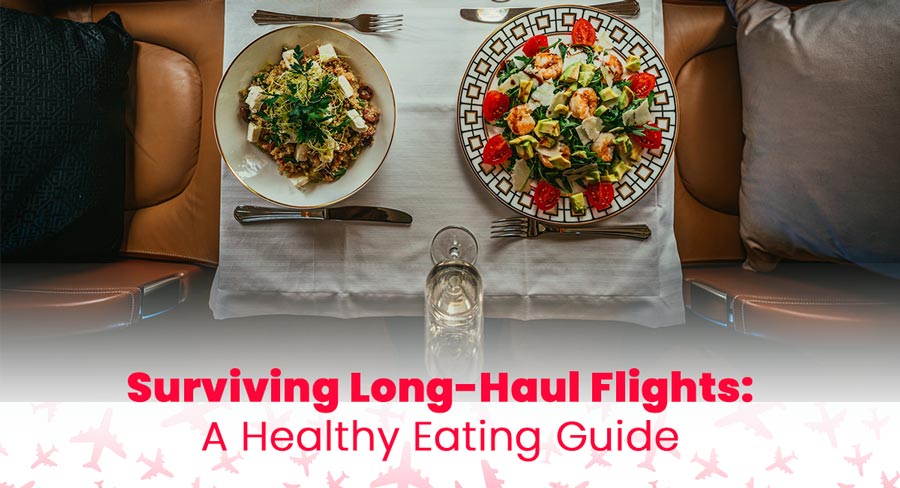
The prospect of long-haul flying can be daunting, especially when it comes to maintaining a balanced diet and healthy eating habits. From the excessive salt content in pre-packaged airline food to the limit on fresh food items you can bring on board, navigating the food landscape at 35,000 feet can be a challenge.
The primary challenge is staying hydrated, as air travel can dehydrate travelers due to the low humidity levels. Also, the lack of physical movement and changes in time zones can disrupt your regular eating schedule and contribute to overeating. High stress levels and boredom during long flights can further tempt flyers into impulse eating.
Importance of Hydration During Long-Haul Flights
The air in an airplane cabin is typically dry. Rehydrating frequently is essential to feel refreshed and reduce fatigue. Opt for water over alcoholic or caffeinated beverages, which could further dehydrate you.
Tips for Eating Healthy in the Airport
Begin your journey well by making wise choices at the airport. Check out the different eateries and look for options like salads, sandwiches, or fruit pots. Smoothies can be an excellent option — providing hydration as well as needed vitamins and minerals.
Meal Suggestions for Long-Haul Flights
Once on the plane, consciously choose your in-flight meal. Most airlines have detailed menus describing each element of the meals available. Opt for meals high in protein and fiber. These will keep you satiated for longer and provide steady energy release.
Choosing Your In-Flight Meal Wisely
When you get your tray, prioritize eating the salad and main meal. If you're still hungry, go ahead with the bread and dessert. The order is crucial in assisting your body in dealing with the carbohydrate load provided in a typical in-flight meal.
Healthy Snacking Options
If you're peckish between meals, opt for healthy snacks such as fruits, unsalted nuts, or protein bars. These will help to keep your energy levels up and prevent overeating due to excessive hunger.
Tips for Resisting Unhealthy Choices in-Flight
Avoid using meals to break up the monotony of a flight. Instead, stretch frequently, take short walks, and if you're trying to sleep, use a comfy eye-mask and earplugs.
Importance of Meal Timing on Long-Haul Flights
Although it might be dinnertime according to your watch, in your destination’s time zone, it might still be the middle of the afternoon. Try to adjust gradually to the new time zone by eating in sync with destination mealtimes.
Packing Your Own Meals: Suggestions and Tips
If possible, packing your snacks allows greater control over what you eat. Consider energy-rich options like a mix of nuts and dried fruits, whole grain sandwiches, or snack bars. Note that while you can take most foods through security checks, there may be restrictions on items like sauces, dips, and drinks.
Managing Dietary Restrictions on Long Flights
For those with dietary restrictions, ensure you notify the airline at least 48 hours before your flight. Many offer meal options catering to different dietary needs, such as vegetarian, vegan, gluten-free, or low-sodium meals.
Post-Flight: How to Get Back on Your Healthy Eating Regime
Once you've reached your destination, try to quickly get back to your normal eating routine. Hydrate well, consume balanced meals, and ensure you maintain your usual exercise routine.
Healthy eating during long-haul flights indeed presents some challenges, but with careful planning, wise choices, and self-discipline, it is possible to maintain your nutritional needs. Stay hydrated, opt for healthier meal options, resist eating out of boredom, and adjust to new time-zone feeding. These steps should aid in maintaining good nutrition, keeping you feeling fresh and energized on your journey.
